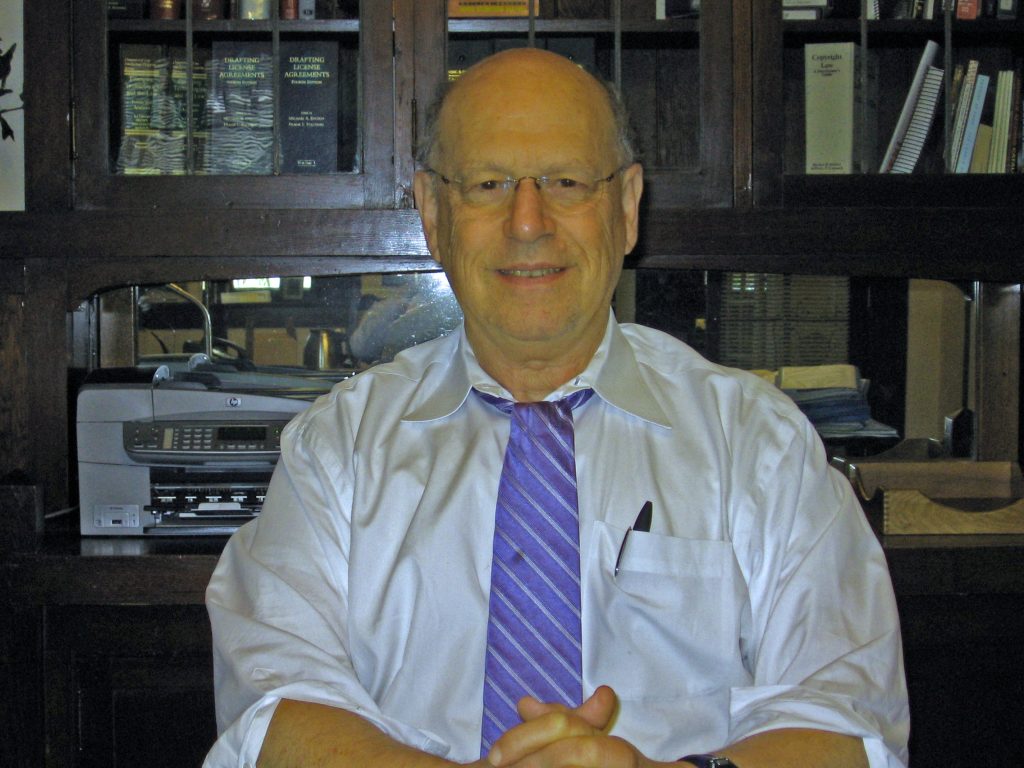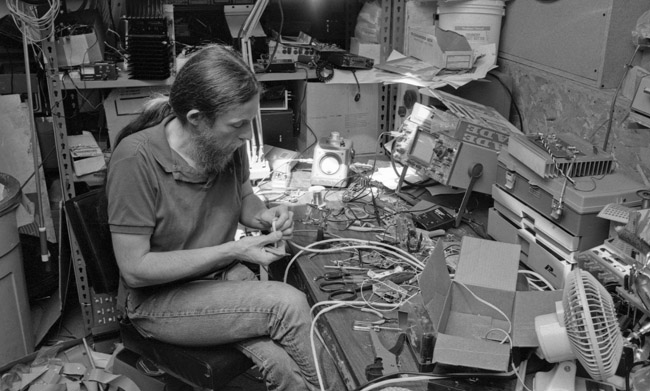One day in 1999, media lawyer Peter Franck found himself on a rather surreal phone call. After years of fighting the FCC in court over so-called “pirate” radio stations, he was speaking with the assistant to the FCC chairman. “The chairman wanted to know, ‘How can we make these things legal?’”
Today, Peter chairs the board of a new low-power FM radio station and Pacifica affiliate KACR. Also known as Alameda Community Radio, the station is scheduled to start broadcasting at 100 watts in January, 2017. There are now about 1600 such licensed stations in the U.S., each broadcasting to 3- to 5-mile-radius “micro” audiences.
Low-power signals have been used since the early days of radio. But in 1979, NPR and others prompted the FCC to eliminate the Class D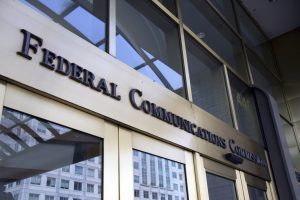 license. Small stations had to quit or go “pirate”—using radio frequency without authorization. Meanwhile, cheaper technology was making it easier to put up an antenna and send out a signal.
license. Small stations had to quit or go “pirate”—using radio frequency without authorization. Meanwhile, cheaper technology was making it easier to put up an antenna and send out a signal.
One person doing that was Mbanna Kantako, a blind, unemployed black man living in Springfield, Illinois. Mbanna had used a few hundred dollars left over from a poverty grant to buy a one-watt FM transmitter. He assembled the transmitter kit, plugged in a microphone and antenna wire, and was on the air.
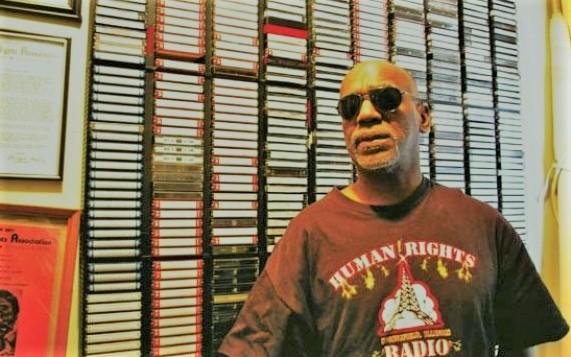
Mbanna Kantako took a cue from university professor Michael Townsend to produce “Black Liberation Radio” for the housing project he lived in.
This little station broadcast rap, music and commentary to the housing project where Mbanna—and much of Springfield’s black population—lived. One of the topics Mbanna discussed on air was police brutality toward poor blacks.
When the FCC went after Mbanna in 1985, a National Lawyers Guild committee that Franck had helped to form was immediately “on the case”. Franck had studied to become a lawyer in the early 1960s so that he could extend the work of activism into the courtroom. He was the lawyer for the Vietnam Day Committee and defended draft dodgers. In fact, it was the poor media coverage of Vietnam War protests led him to focus on media issues.
I would go to an anti-war demonstration that had tens of thousands of people, then read the coverage and wonder whether the reporter had been at the same demonstration.
The Committee on Democratic Communications, as it was called, assembled a brief founded on a basic principle of international law: human beings have a right to communicate. According to Franck, the positive phrasing of this idea (as opposed to the First Amendment’s “Congress shall make no law…”) made it easier to use.
Ultimately, Mbanna declined the CDC’s representation. But the brief was ready to go when the next FCC target arose: Stephen Dunifer, whose use of the early Internet (c. 1989) gave him access to cutting-edge news he wanted to broadcast on what he called “Free Radio Berkeley”.
Without making a definite ruling on the Dunifer case, the judge declared that the freedom-of-speech argument had “significant merit”.
In the decade that followed, Franck and the CDC had success fighting FCC challenges to micro-radio operators in court. When a case arose, the CDC would send the brief to whatever lawyer was representing the defendent. Says Franck:
Ultimately, the FCC realized it was losing its battle. There were over a thousand unauthorized micro-radio stations. The FCC couldn’t close down every one.
The original parameters FCC chair William Kennard (below) proposed were not satisfactory. Franck and others such as Prometheus Radio Project successfully fought for the strictly non-commercial status of the new low-power stations. Hundreds of stations were formed in the first LPFM “window”. But NPR and the National Broadcasters Association had argued that low-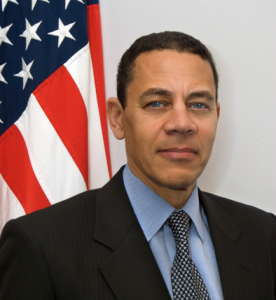 power signals needed to be two or three frequencies removed from regular power signals so as not to interfere with them. In urban settings, this would have disqualified virtually all available frequencies. The argument was bogus, but it took a commissioned study several years to make that conclusion.
power signals needed to be two or three frequencies removed from regular power signals so as not to interfere with them. In urban settings, this would have disqualified virtually all available frequencies. The argument was bogus, but it took a commissioned study several years to make that conclusion.
Finally, an LPFM window that allowed for urban stations was announced. Organizations could submit an application during 2 weeks in October 2013. Alameda Community Radio earned “points” on its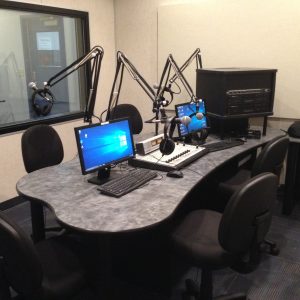 application by teaming up with the Alameda Unified School District in a frequency-sharing agreement. The plan was for the school district to build the studio (see photo, left) and KACR to buy the transmitter and set up the studio-to-transmitter link. Poor Magazine will also share the frequency.
application by teaming up with the Alameda Unified School District in a frequency-sharing agreement. The plan was for the school district to build the studio (see photo, left) and KACR to buy the transmitter and set up the studio-to-transmitter link. Poor Magazine will also share the frequency.
It’s ironic for Peter Franck to be involved in station-building within the signal range of Berkeley station KPFA, the mothership of Pacifica Radio, and indeed of all listener-supported radio. Peter served on the board of Pacifica for 11 years, and as the president of Pacifica Foundation from 1980-84. But KPFA’s wide broadcast range mandates more general coverage. Says Franck:
Alameda is an island; its community is well defined. But its schools and issues don’t get covered by the media out of Oakland and San Francisco. It’s a perfect candidate for low-power community radio.
Encinal High School in Alameda as been training its students to do radio and is ready to start broadcasting. For KACR, fundraising has been the usual struggle, but the recent election has galvanized the community to safeguard their free speech.
Trump’s FCC appointees may pose new challenges to the low-power FM movement. Low-power stations currently face serious issues such as encroachment on their signals by corporate and NPR-affiliated “repeater” stations. The courts may yet be the ground where champion of free speech like Peter Franck defend the rights of the people to be heard.

